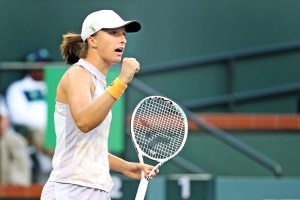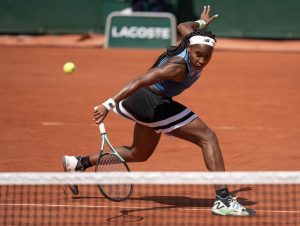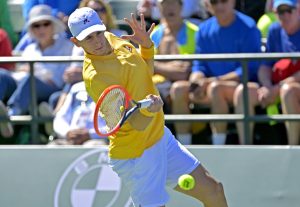For most tennis players, reaching multiple Grand Slam finals in less than a year will bring them under the spotlight, especially when the sport is dominated by a few handful. Every next move of theirs will be under the radar. Every Grand Slam match will be deeply scrutinized to see how their Slam-winning chances are improving with each win. But, that’s not quite what happened to Kevin Anderson since his unexpected run to the final at last year’s US Open. He’s had a respectable career whilst being away from the spotlight, and that hasn’t changed over the last 18 months.
Anderson’s escape act
Anderson doesn’t have the easiest of draws at the Open. Drawing title contender Rafael Nadal in the same quarter and Juan Martin del Potro in the same half is a threat to Anderson’s hopes of defending his runner-up showing of last year. And he knows it too. Under such circumstances, the common thing a player would want is to spend as less time on court as possible, before playing the nerve-wracking second week matches. But, that wasn’t to be for Anderson, since he needed to get through two five-setters in the first week itself. His 5-set marathons against Ryan Harrison and Denis Shapovalov showed that he’s on his way of mastering the escape act that higher ranked players go through every now and the. It doesn’t matter if he isn’t playing his best, or if his opponent is just unstoppable on that day. In the end, he got through both of them to live another day.
Granted, as one of the top seeds, he shouldn’t have to play so many tough matches early on. But, for most higher seeds, second week is where a Grand Slam really gains momentum. The first week is exclusively about survival and self-assessment. The better a player judges himself in the first week, the higher are his chances of stealing the show in the second.
A change in the process
In his first 14 Grand Slams, Anderson never made the 4th round. In the next 23, he made the 4th round 14 times. But it wasn’t until last year, following his comeback from injury, that he truly got the breakthrough he so needed. His run to the US Open final last year, instilled the belief in him that he could compete with the best at the highest levels. And a run to Wimbledon final this year further solidified that belief. Late bloomers mostly break through due to a change in the process. For Anderson, the change seems to be a newfound zen that has led to improvement in his overall game. His serve is still his biggest weapon, coming down from a height of over 2 meters. But there’s significant improvement in his groundstrokes and, for someone so tall, staying true to the process has surely paid dividends in the form of an highly improved footwork.
Kevin Anderson will play Dominic Thiem in the 4th round. He boasts a 6-0 record against Thiem on hard courts, but he knows better than to take any opponent lightly. Beating Thiem will be a monumental task in itself, and Anderson will require his best tennis to find a way out.
Not the everyday tennis player
Kevin Anderson isn’t what you’d normally expect of a tennis player, or a modern tennis player for that matter. He barely shows emotion while playing, barely ever shouts, or screams, or throws a tantrum on court. He doesn’t jump or roar when he wins, neither does he flinch under pressure. At first glance, he looks more like an employee at any organization who knows there’s no way around hard work. Perhaps that’s what brings the best out of him. He doesn’t care about the stardom or the glamour. We won’t see him getting the crowd-puller night session matches at a major, unless he’s playing someone more popular. What we will see, though, is his indomitable spirit and iron-will that guides him through. And that is what he’ll have to rely on if he wants to punch over his weight.
Anderson faces Dominic Thiem next. If he gets through him, there’s a potential quarterfinal against Nadal. This is where it gets the most difficult, but he believes in his process of figuring out the answers to solutions, no matter how difficult they might seem. It’s led him to play his best tennis at the age of 31 and 32. But who knows, maybe his best is yet to come!
Main Photo:
Embed from Getty Images






